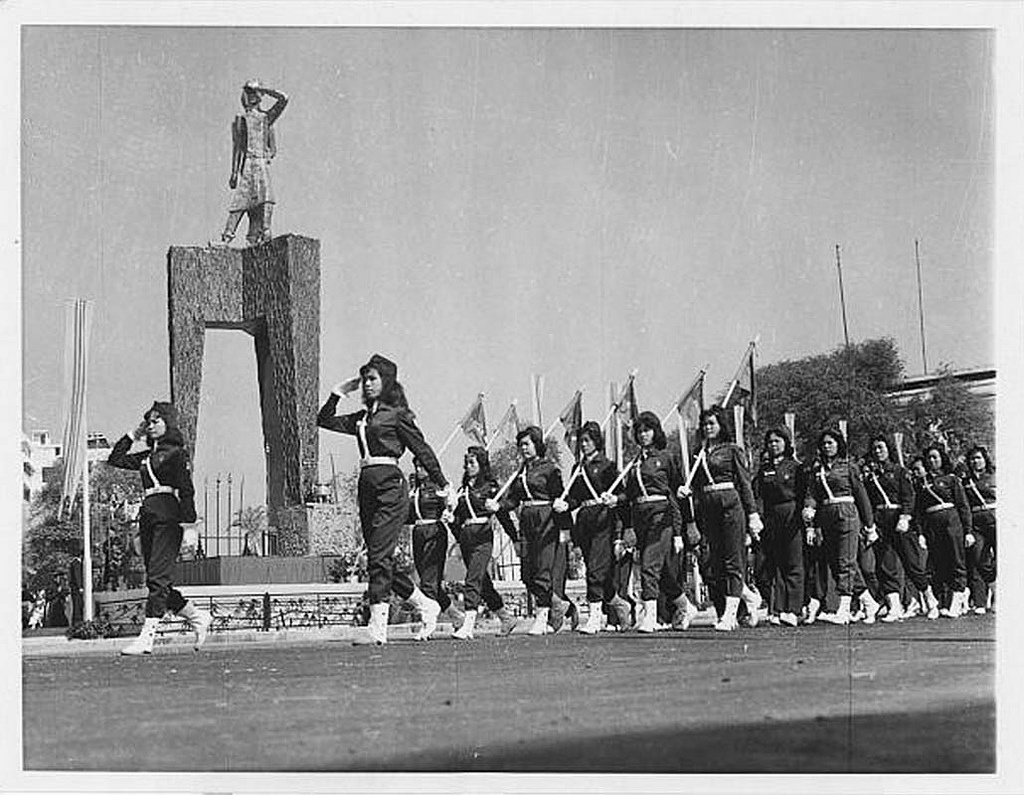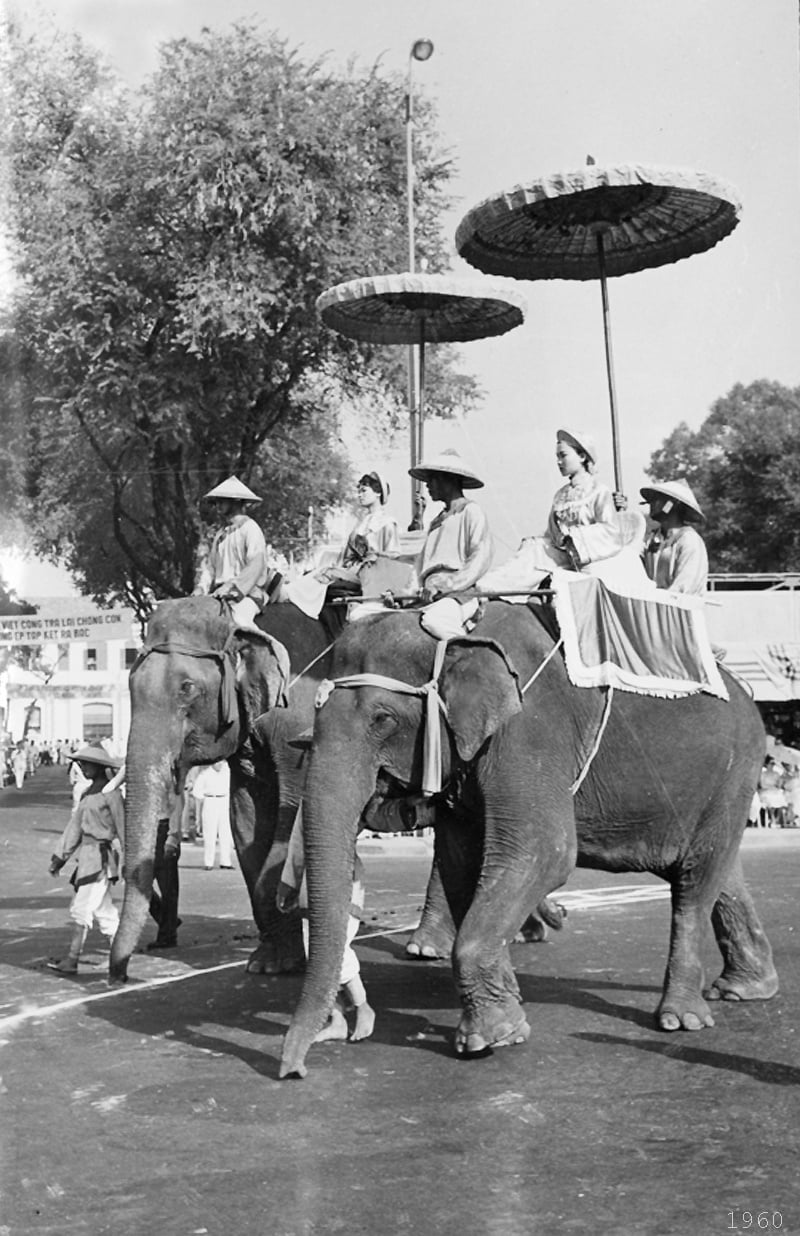Herstory: The Trung Sisters – Brave Heroines of Vietnamese History
 Contributed by
Michaela Anchan
January 10, 2016
Contributed by
Michaela Anchan
January 10, 2016

Perhaps the most significant women in the history of Vietnam are the Trung sisters, who in 40 A.D. became responsible for steering the very first Vietnamese national uprising against Chinese conquerors who had been ruling Vietnam for more than 247 years. Their acts of bravery are so significant that if they had not done what they did then, Vietnam would not be enjoying the liberties it now does and would likely still be under Chinese rule.
The two sisters were named Trung Trac, who was the elder and Trung Nhi, the younger. They were born (dates were unaccounted) in the province of Giao Chi, which is now known as Northern Vietnam. They came from a very prominent family, given that their father was General Lac of Me Linh province, and a powerful lord. Living in a military family meant that the Trung sisters were well trained in the martial arts. They spent a good amount of time studying the complicated art of warfare and honed their fighting skills.
The Trung sisters were fortunate enough to experience growing up years that allowed them freedom and certain liberties that were not given to women in the centuries that soon followed their time. These included the right to inherit property that belonged to their mother and they had the freedom to become traders, political leaders, judges, and warriors, among others.
A neighboring official came to visit the Me Linh province and brought his son, Thi Sach with him and was introduced to Trung Trac. The two met, fell in love and were soon wed. Thi Sach – a man who was noted for his bravery and fearless disposition, seemed the fitting groom to a fearless and spirited woman such as Trung Trac. For the people in their village, their union symbolized hope as the couple both came from military families and displayed the kind of spirit needed to revolt against the ruling Chinese.
At this time, the Vietnamese were under the rule of To Dinh, a Chinese governor who had made life harsh for everyone. Trung Trac’s husband Thi Sach was also known for being very vocal against the Chinese and had more than once made a stand against their harsh rule. His most significant one is a protest against unjust and increasing tax rates. It has been said that the final straw that spurred the Trung sisters to action was when To Dinh had Thi Sach killed as a warning to all those who dared stand against the Chinese rulers. Instead of mourning her husband and quietly retreating to their home, his widow was instead moved to do something about the situation of their people. Brave Trung Trac had had enough, and sought to mobilize the people of Vietnam against the Chinese.
Along with her sister Trung Nhi, the two committed acts that were evidence of their bravery and ability to lead the people against the Chinese. These included slaying a people-eating tiger and later on using its skin to compose a proclamation that urged the people of Vietnam to follow their lead in the revolt against the Chinese.
Their acts of bravery inspired 80,000 people to form the Trung sisters’ army. From this number, thirty-six women (including their own mother) were handpicked to become generals. Many have mentioned that this particular piece of information about Vietnam’s history points to the society at that time being a matriarchal one.

Summoning knowledge and experience about the art of warfare from their growing up years, the Trung sisters guided these young, unskilled women through intensive training to become fearless generals that drove the unwanted Chinese conquerors out of Vietnamese territory in 40 A.D. Trung Nhi, in particular, was said to be the better warrior between the two, and led the army to liberate sixty-five fortresses. Trung Tac, on the other hand, was more ideal as a politician and leader – and this soon became a reality when the people ended up proclaiming her as their ruler, with Trung Nhi serving as her co-regent and top advisor.
Trung Trac was renamed “Trung Vuong” (She-king Trung) and established a royal court in the Me Linh area of the Hong River plain. With the good of the people in mind, one of her first mandates included abolishing the much-hated tribute taxes, which was an imposition of the Chinese. Trung Vuong also sought to rid the Vietnamese government of any leftover Chinese influence, making things simpler and more in keeping with their traditional Vietnamese values.
Life for the Trung sisters and for Vietnam did not settle down peacefully after their victory against the Chinese, and the next three years brought about frequent clashes with the government of China in Vietnam. Finally, the Vietnamese army was out-armed by the Chinese and was defeated in 43 A.D.
Legend says that instead of surrendering and accepting defeat, the Trung sisters chose to commit suicide, as is the Vietnamese tradition of keeping one’s honor. Stories circulate about how they came to pass, with some saying they chose to drown in the river and others – more legendary than factual in nature – say that they had disappeared off into the clouds.
Contemporary Vietnam has not forgotten the sacrifices made by the brave Trung sisters, with temples built in their honor scattered around the country, and their memory celebrated every year through a national holiday (Hai Ba Trung Day) in their honor.
The valor of the Trung sisters is a reminder to today’s society of what can be accomplished with passion, bravery, and courage. These Vietnamese national heroines are indeed real symbols of resistance and independence and their uncommon story, as female war heroes, should not be forgotten.
Visit Woolf Works page to find out more about the Coworking space.












Sorry, the comment form is closed at this time.